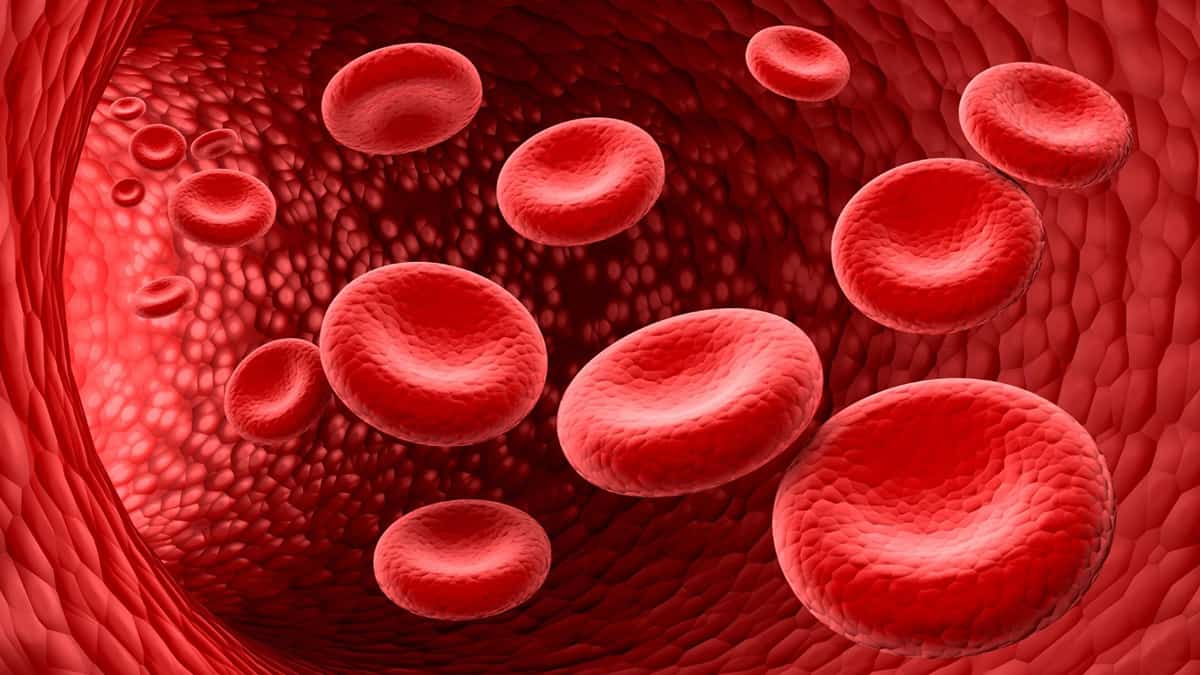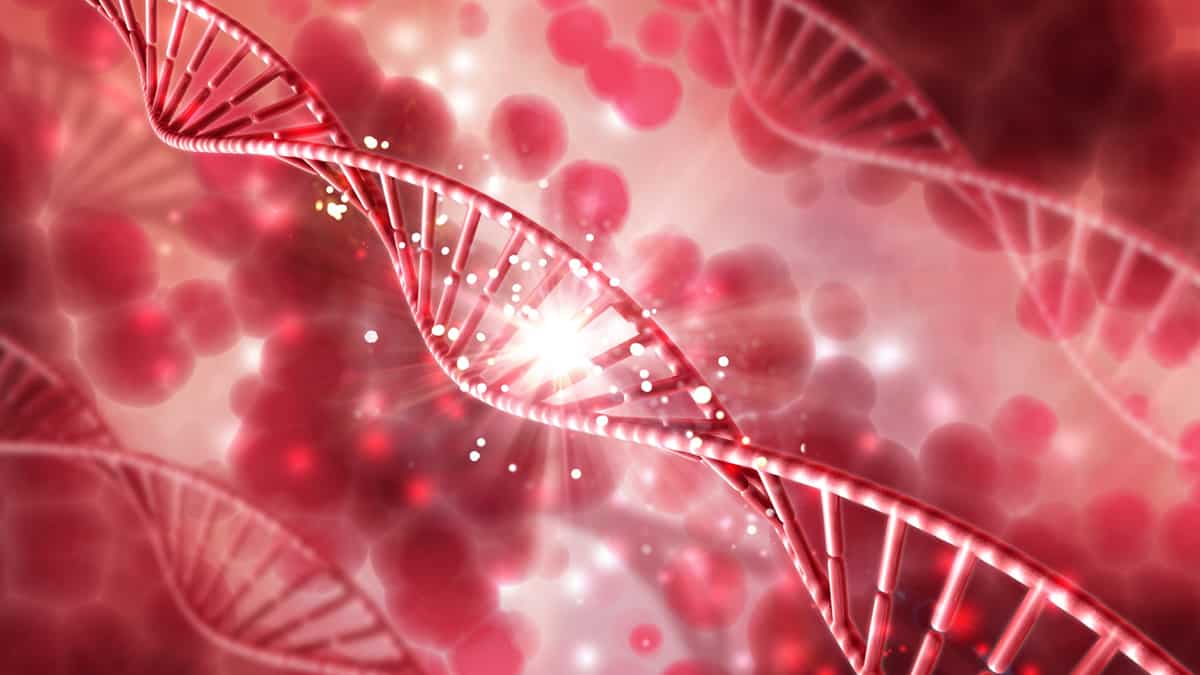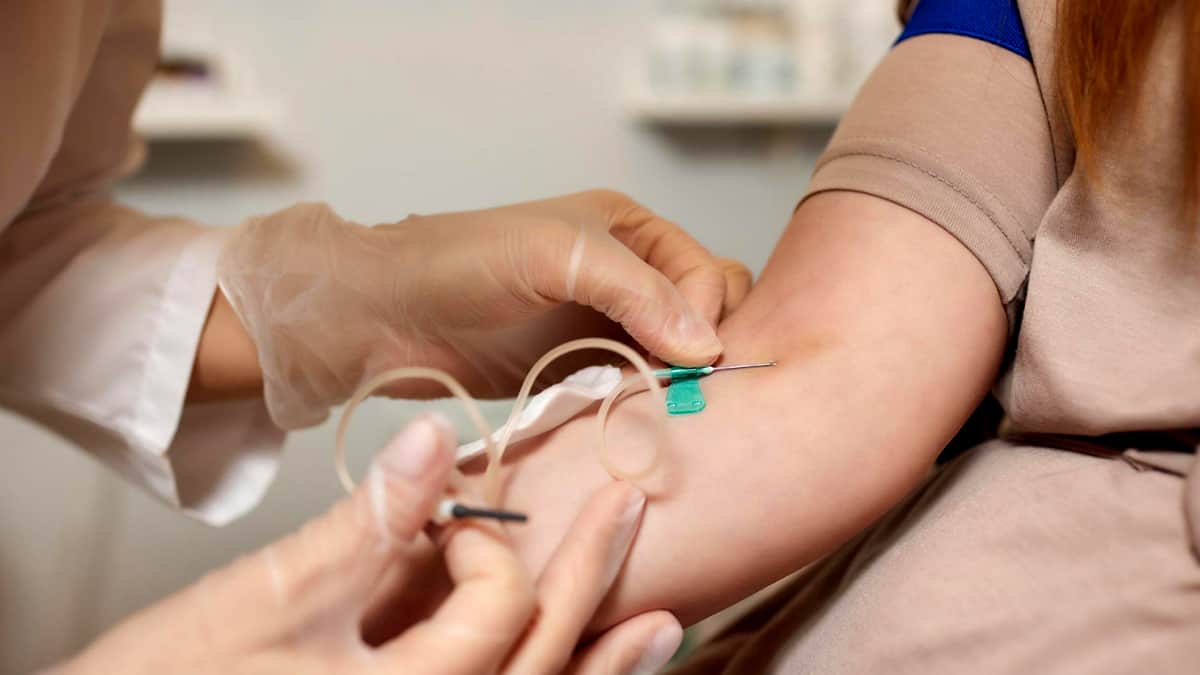Different Types of Anemia and Their Causes
Physical Health

Anemia is a condition caused by decreased production of red blood cells (RBCs). Because RBCs carry oxygen, anemia leads to low oxygen levels in the blood. In this low-oxygen state, people commonly feel tired and weak.
The World Health Organization (WHO) defines anemia as a hemoglobin level less than 12.0 g/dL (grams/deciliter) of blood in female adults, less than 11.0 g/dL in pregnant women, and less than 13.0 g/dL in male adults. Hemoglobin is the substance in RBCs that carries oxygen.
Identifying the cause of anemia is essential because anemia is treated differently depending on its cause. Many conditions can cause anemia. The different types of anemia are distinguished based on their unique causes and characteristics.
Iron-Deficiency Anemia
The most common form of anemia is iron-deficiency anemia (IDA). As the name suggests, low iron levels cause IDA. The body needs iron to make hemoglobin. Without enough iron, the body cannot make healthy RBCs, and this leads to anemia.
Healthy iron levels depend on dietary intake because the body cannot make its own iron. As a result, IDA is very common in people with low-iron diets. In addition to those at increased risk due to low intake, groups who are at the highest risk for IDA include:
- People who menstruate, especially if they have heavy periods
- People who are pregnant, breastfeeding, or who gave birth recently
- People who have experienced physical trauma or major surgery, especially surgery that removes part of the intestines
- People with certain diseases of the gut, like celiac disease and inflammatory bowel diseases
- People with peptic ulcer disease (PUD)
- People who’ve had bariatric surgery, especially gastric (stomach) bypass
- Children who drink more than 16 to 24 oz of milk per day (milk lowers absorption of iron in the gut and contains little iron)
- People with blood loss from the gastrointestinal (GI) tract (the esophagus, stomach, and intestines) from various conditions, including inflammatory diseases, infections, and tumors
- People with chronic nosebleeds
- People who do not eat meat, poultry, and fish (iron from iron-rich vegetables isn’t absorbed as well as from animal flesh)
- People with kidney or bladder disease
- People who undergo frequent blood donations
- People with intravascular hemolysis (RBC breakdown in the blood, releasing iron that is removed in the urine)
Many of the groups at the highest risk for IDA have conditions that affect the GI tract. This commonality reflects how iron is absorbed by the body. Most of the iron consumed in the diet is absorbed in the duodenum and upper jejunum — the first two parts of the small intestine. As a result, conditions affecting the GI tract significantly increase the risk of reduced iron absorption and IDA.
Recognizing symptoms of IDA is essential for prompt treatment of anemia. Depending on the person and the cause of anemia, symptoms can appear suddenly or develop slowly. Symptoms of IDA, which are shared by many other types of anemia, include:
- Weakness
- Pale skin
- Tiredness
- Fatigue (severe tiredness)
- Chills
- Shortness of breath (difficulty breathing)
- Headache
- Dizziness
- Fainting
- Bleeding
- Jaundice (yellowing of the skin)
Importantly, people with mild anemia may have no symptoms. If you’re at higher risk for IDA, your doctor may recommend doing bloodwork to check for signs of anemia, regardless of whether you have symptoms.
Vitamin-Deficiency Anemia
Vitamin-deficiency anemia includes folate (vitamin B9) and cobalamin (vitamin B12) deficiencies. Along with iron, the body needs both folate and cobalamin to make healthy RBCs.
Cobalamin deficiency has three potential causes: low-cobalamin diet, autoimmune disease, and gastrointestinal (GI) tract disease. The primary dietary sources of cobalamin are meat, eggs, and milk. People with diets low in these foods are at risk of cobalamin deficiency and subsequent anemia.
Autoimmune disease refers to conditions where the immune system attacks the body’s own healthy cells. Sometimes, immune cells attack a substance called intrinsic factor — a protein made in the stomach that promotes the breakdown and absorption of cobalamin. Without intrinsic factor, people develop pernicious anemia — cobalamin deficiency caused by the autoimmune destruction of intrinsic factor.
People who’ve had surgery that removes part of the stomach or the end of the small intestine can also develop cobalamin deficiency and anemia because of reduced cobalamin absorption. Other conditions like Crohn’s disease and celiac disease can also disrupt cobalamin absorption, leading to deficiency and anemia.
Lack of folate in the diet causes most folate-deficiency anemias. The primary natural sources of folic acid are leafy vegetables, citrus fruits, whole grains, and beans. People with diets low in these foods can develop folate deficiency. Other causes include:
- Heavy alcohol use (defined by the Centers for Disease Control and Prevention (CDC) as 8 or more drinks per week for women and 15 or more drinks per week for men)
- Diseases of the intestines like celiac disease that interfere with folic acid absorption
- Cancer
- Certain medications (i.e., anti-seizure medications)
- Pregnancy
Cobalamin- and folate-deficiency anemia may cause symptoms similar to those caused by IDA, such as fatigue and pale skin. Other shared symptoms include:
- Diarrhea
- Smooth and tender tongue
- Irritability
- Low appetite
Because of its role in nerve cell development, cobalamin deficiency can also cause neurological symptoms, including:
- Weak muscles
- Numbness or tingling in the feet and hands
- Difficulty walking
Sickle Cell Anemia

Sickle cell disease (SCD) causes sickle cell anemia. SCD is a lifelong illness. Due to an inherited genetic mutation (change in genes) that affects the shape of hemoglobin, RBCs take on a crescent or ‘sickle’ shape in people with SCD. Sickled RBCs break apart easily and die faster than normal RBCs. This leads to anemia.
Normal RBCs are flexible and disc-shaped and able to move smoothly through blood vessels. Sickled RBCs, on the other hand, cannot bend easily and get stuck. As a result, people with SCD are at an increased risk of stroke, blood clots in the legs, heart attacks, and other blood clotting complications.
SCD can also cause other serious complications. Acute chest syndrome (ACS), for example, is a complication specific (only occurs in this condition) to SCD and requires emergency medical treatment. ACS is caused by a lung infection and/or sickle cells blocking the lungs’ blood vessels. Symptoms include chest pain, trouble breathing, and fever.
Pulmonary hypertension — high blood pressure in the lungs — is another serious complication that mainly affects adults with SCD.
Other serious potential complications of SCD include:
- Organ damage to the kidneys, liver, and spleen
- Trapping of sickle cells in the spleen
- Blindness
- Leg ulcers
- Gallstones
- Priapism (painful, long-lasting erections)
- Pregnancy complications, including miscarriage, preterm birth, and low birth weight
As with other anemia types, symptoms of SCD can vary by individual and over time. Sickle cell anemia is one of the main signs of SCD and causes symptoms similar to other types of anemia, such as fatigue, shortness of breath, and pale skin. Other signs and symptoms of SCD include:
- Pain episodes, also called pain crises
- Hand and foot swelling
- Delayed growth or puberty
- Frequent infections
- Vision problems
Thalassemia
Thalassemia is another inherited blood disorder that affects hemoglobin production. Without functional hemoglobin, RBCs cannot carry enough oxygen and anemia results.
Hemoglobin is made of four protein chains: two alpha chains and two beta chains. Four genes are responsible for making the alpha chains, and two genes are responsible for the beta chains. People inherit these genes from their parents. Based on how the condition affects these protein chains, thalassemia is divided into two categories: alpha thalassemia and beta thalassemia.
Thalassemia is also classified by severity. Severity is determined based on how many defective hemoglobin genes are present. For alpha thalassemia, the classifications are:
- Alpha thalassemia minima: one defective or missing alpha gene that causes no symptoms
- Alpha thalassemia minor: two dysfunctional or missing alpha genes that cause mild symptoms
- Alpha thalassemia intermedia or Hemoglobin H disease: three dysfunctional or missing alpha genes that cause moderate to severe symptoms
- Alpha thalassemia major or Hemoglobin Barts: four dysfunctional or missing alpha genes that cause severe symptoms and usually lead to death
For beta thalassemia, the classifications are:
- Beta thalassemia minor: one dysfunctional or missing beta gene that causes mild symptoms
- Beta thalassemia intermedia: two dysfunctional or missing beta genes that cause moderate symptoms
- Beta thalassemia major or Cooley’s anemia: two dysfunctional or missing beta genes that cause severe symptoms
Thalassemia symptoms depend on the type of thalassemia. As mentioned, people with thalassemia trait have no symptoms. People with minor thalassemia will likely have minor anemia symptoms. Intermedia or major thalassemia can cause moderate symptoms, including:
- Growth problems
- Bone disease, such as osteoporosis
- Delayed puberty
- Spleen enlargement
Severe thalassemia symptoms, which can result from mild to moderate disease, include:
- Low appetite
- Dark-colored urine
- Bone structure irregularities in the face
- Pale or jaundiced skin
Symptoms of severe alpha thalassemia are usually present at birth, while those of severe beta thalassemia often develop by age 2. Thalassemia, especially more severe disease, can cause various complications. People with thalassemia can have issues due to having too much iron from frequent blood transfusions or their condition. Too much iron can damage the heart, liver, and endocrine (hormone) system.
Hemolytic Anemia
Another type of anemia is hemolytic anemia, which occurs when the body destroys RBCs faster than it can make new ones. Depending on its cause, hemolytic anemia symptoms may be mild or serious and evolve quickly or slowly over time.
The body gets rid of old or damaged RBCs in the spleen and other areas through hemolysis — the name given to the RBC destruction process. Normally, this process is balanced by the creation of new RBCs in the sponge-like center of bones, called bone marrow. Numerous conditions can lead to increased hemolysis and hemolytic anemia. Hemolytic anemia conditions can be inherited or acquired. Inherited (passed from parent to child) conditions causing hemolytic anemia include:
- Sickle cell disease
- Thalassemia
Acquired (develops during life and isn’t inherited) conditions that cause hemolytic anemia include:
- Autoimmune conditions, such as lupus, rheumatoid arthritis, and inflammatory bowel disease
- Blood transfusion complications
- Infections
- Certain medications
- Bone marrow disease
- Certain cancers
- History of mechanical valve repair
As with other types of anemia, symptoms of hemolytic anemia vary by individual. Hemolytic anemia also shares symptoms with other anemia types. Possible symptoms include:
- Pale skin
- Jaundice
- Dark-colored urine
- Fever
- Weakness
- Dizziness
- Confusion
- Inability to do physical activity
- Enlarged spleen and/or liver
- Tachycardia (increased heart rate)
- Abnormal heart rhythm
Aplastic Anemia
Aplastic anemia, also called bone marrow failure, is a rare blood disorder. When the bone marrow doesn’t function properly, it can’t make enough blood cells, including RBCs. Similar to hemolytic anemia, aplastic anemia can develop rapidly or slowly. Aplastic anemia can be severe or mild depending on its cause but is generally considered serious.
Exactly how aplastic anemia develops isn’t fully understood, but the most common known cause is autoimmune bone marrow destruction. As a result, autoimmune conditions, such as lupus, increase the risk of developing aplastic anemia. Other conditions that increase the risk of aplastic anemia include:
- Viral infections, such as Epstein-Barr virus, cytomegalovirus, parvovirus B19, and human immunodeficiency virus (HIV)
- Paroxysmal nocturnal hemoglobinuria (an acquired condition characterized by rapid RBC breakdown)
- Pregnancy
- Inherited conditions, such as Fanconi anemia, dyskeratosis congenita, Diamond-Blackfan anemia, Shwachman-Diamond syndrome, and Pearson syndrome
When aplastic anemia develops rapidly, people tend to notice immediate, severe symptoms. However, if the condition takes time to develop, symptoms may not be noticeable or mild. In either scenario, symptoms may include:
- Frequent, long-lasting viral infections
- Easy bleeding or bruising
- Fatigue
- Shortness of breath
- Pale skin
- Dizziness
- Headache
- Fever
Anemia of Chronic Disease

Anemia of chronic disease (ACD) is anemia caused by inflammation due to chronic (long-lasting) medical conditions. Chronic inflammation affects the body’s ability to use its stored iron to make new RBCs, which leads to anemia.
ACD is often associated with autoimmune disease, but any chronic condition that causes inflammation can lead to ACD. These include:
- Cancer
- Chronic kidney disease (CKD)
- Heart failure
- Autoimmune diseases, such as rheumatoid arthritis and lupus
- Infections
Symptoms of ACD are similar to those of IDA, including fatigue, difficulty breathing, pale skin, headaches, dizziness, and sweatiness.
Talk With Your Doctor
Because of symptom overlap between types of anemia, telling them apart requires a thorough evaluation by a healthcare professional. If you have any of these signs or symptoms or are living with anemia, it’s important to discuss your symptoms or condition with your doctor. Your doctor will review your medical history and perform testing to diagnose the type of anemia you have and determine the best treatment plan.